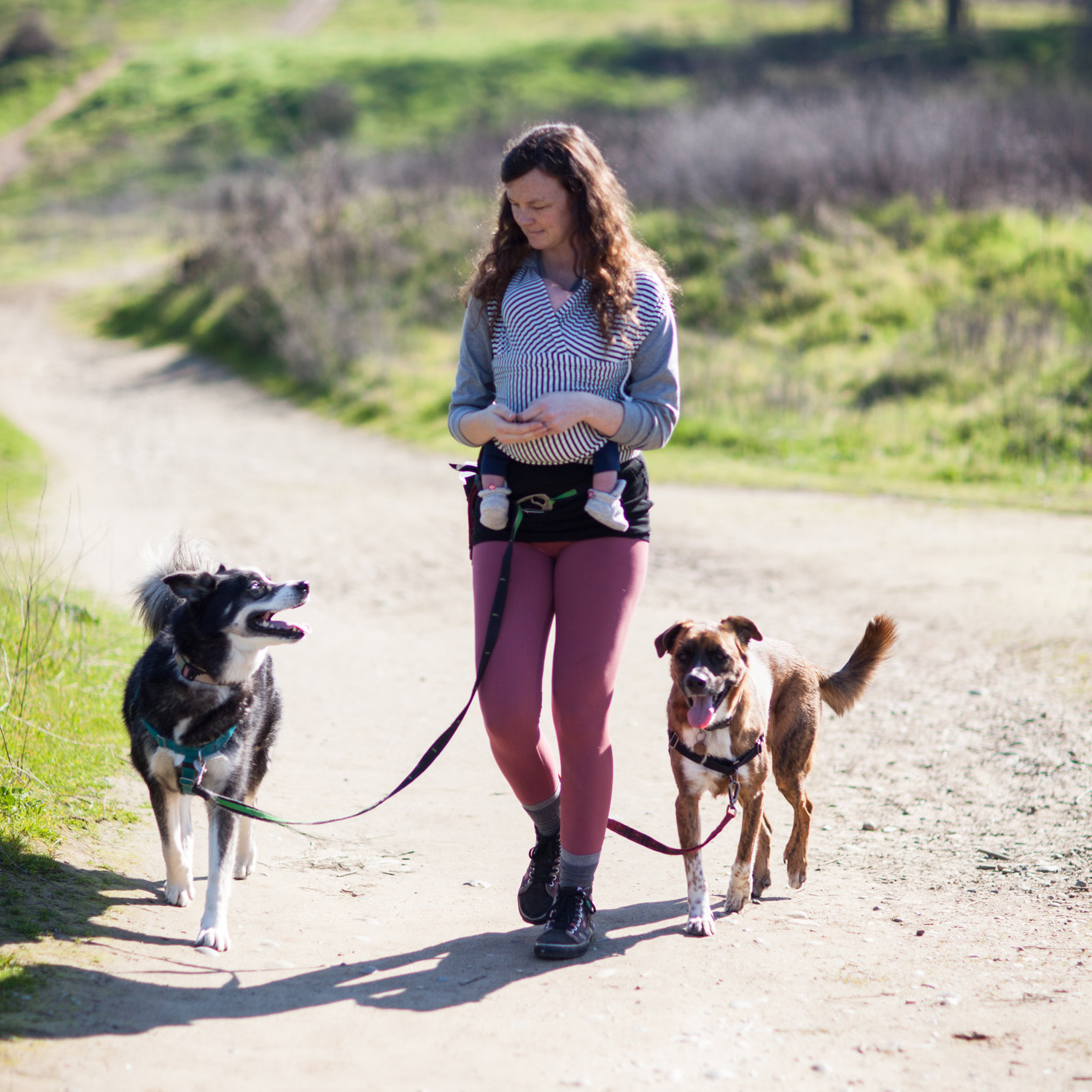Oftentimes when people begin to look into dog and baby prep, they are really focused on homecoming - that initial life-changing upheaval of a dog’s life that is bringing a new baby home. And don’t get me wrong, that’s a huge moment, and preparing ahead of time can really be instrumental in getting off on the right foot. But as the Family Paws saying reminds us: Babies grow, dogs age, adjust management at every stage.
One year old! Can you believe it? I hardly can! Just like that, my squishy little baby is a toddler (although he's not exactly toddling yet). As our little ones get older, it seems like more and more developmental difference occur - they start to become more and more their own beings and may race ahead in certain areas and take their time in others. That being said, let's talk a little about some of the common milestones we'll see around this age, and adjustments we might make to keep our dogs comfortable with these changes:
Cruising/Walking
Your little one may have been pulling up to stand on the furniture for quite some time, but about now they may be experimenting with traveling around a bit more in the upright position. Wiley's not quite ready to walk yet, but certainly moves around using the coffee table, couch, gates, and anything else he can get his hands on for support!
Just like with pulling up to stand, this means more possibilities for your kiddo to be at your dog's face level, which can be all the more concerning when they're in motion. Sofas and beds are no longer safe refuges away from the baby, so it's important to make sure your dog has other ways to get space when needed. It's important to make sure your toddler is not testing out those new legs near the dogs' resting areas, as a tumble on or near them could be quite startling!
This new and initially unsteady motion can be unsettling for some dogs. Using layers of management and doing some counter-conditioning can be helpful. Layers of management (multiple gates or x-pens, for example) can be important if your dog is sensitive or even just over excited about those little fingers emerging through the gates.
New Kinds of Movement
Wiley may not be walking yet but boy does this kid love to ride his trike! Around this age, many little ones may be ready for trikes, pushcars or even motorized toy vehicles. In other words - things on wheels.
Some dogs may be worried about these new moving shapes, or may be a little too interested in chasing this new thing in motion. Let your dog check out new objects ahead of time without the baby present and get comfortable with the way it looks, smells, and moves. Use management when your child is first trying out their new wheels, as well as to ensure that no pups are inadvertently crashed into or rolled over!
If your dog shows discomfort around these new things, you can use counter-conditioning with plenty of space from the worrisome object to help them get used to it. It's also okay to decide that certain toys are only used when the dog isn't present. If your dog is showing too much interest, or seems likely to chase, make sure there is one adult designated to work with the dog while another supervises the child. You can begin to mark and reinforce the dog for removing focus from the object in motion - using distance again, to make success attainable.
Increased Management Needs During Outings
Okay this subheading may not exactly roll off the tongue but this is a biggie! As our little ones get bigger, gain mobility, and get more and more curious about the world around them, family outings may begin to require a new level of management. Keeping our curious toddlers safe is suddenly a bigger task than it may have been with a less mobile baby.
Having one designated adult to care for the dogs and another for the child (or children) is the safest way to plan a family adventure. If that's not an option, plan ahead and pick quiet areas where few distractions will be present for the dog. Be prepared to exit if the situation becomes difficult to manage - giving yourself permission to bail if you need to is always a good choice!

